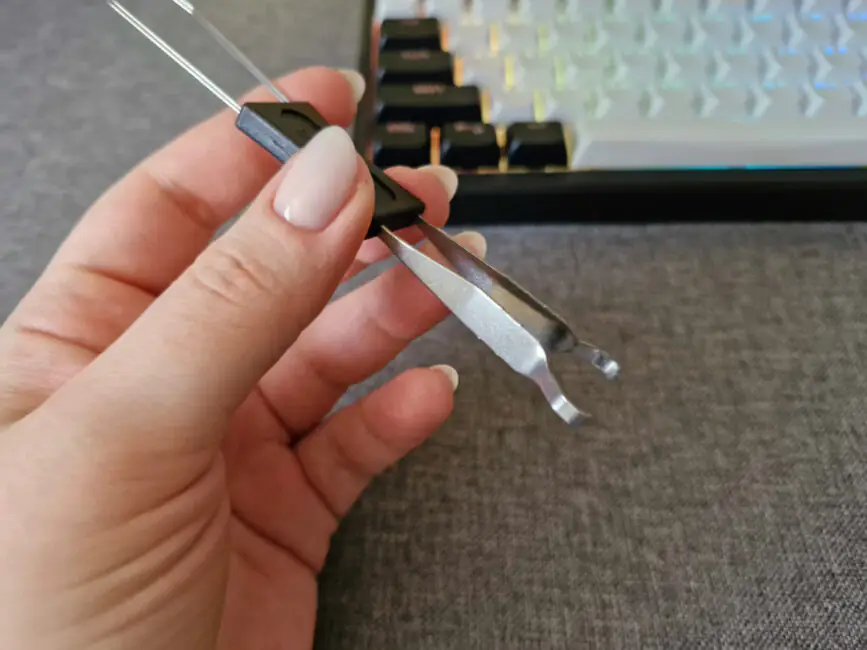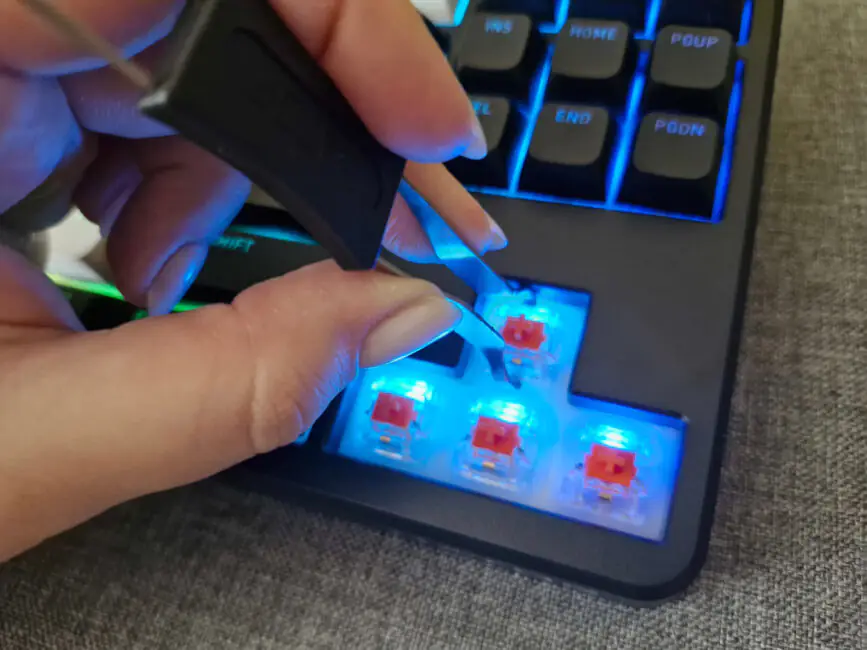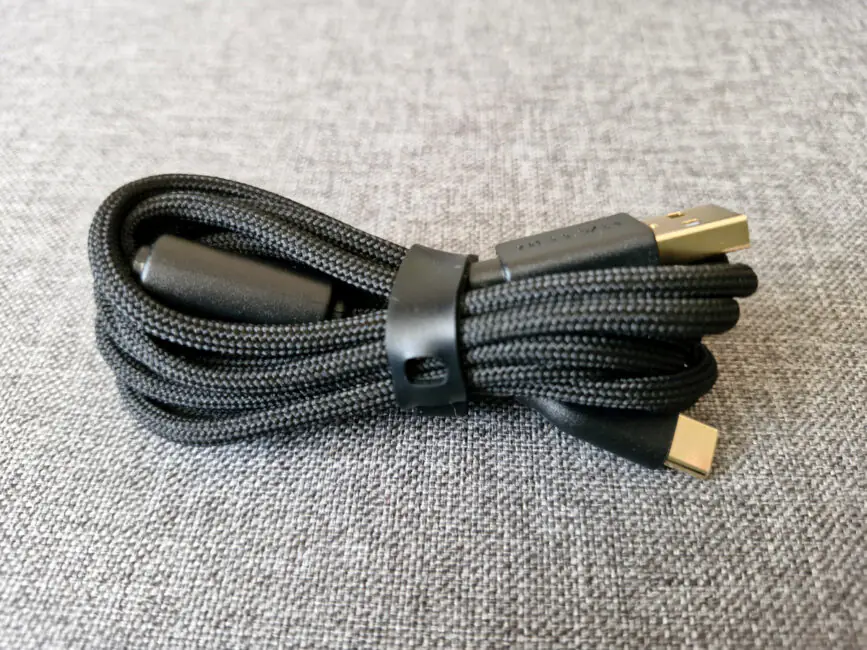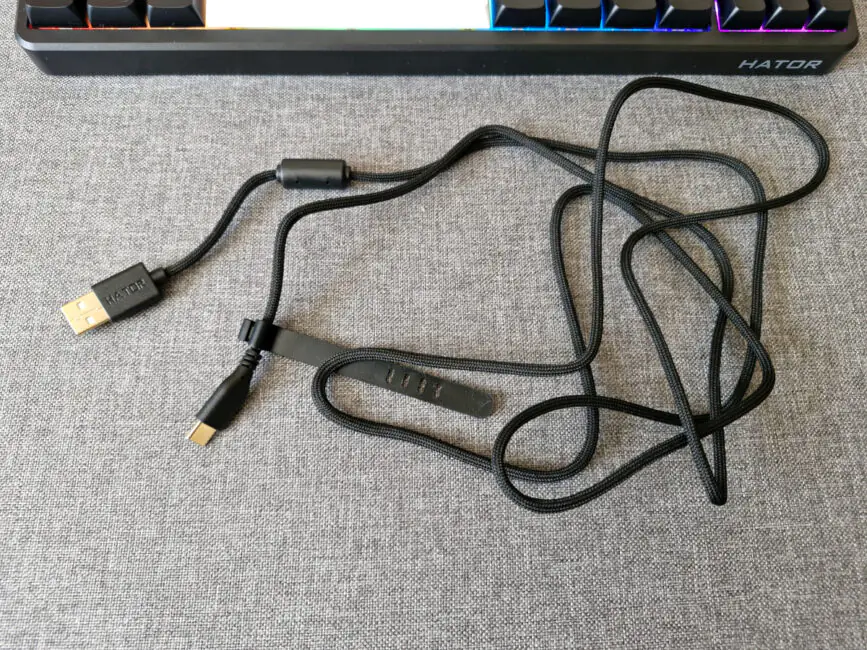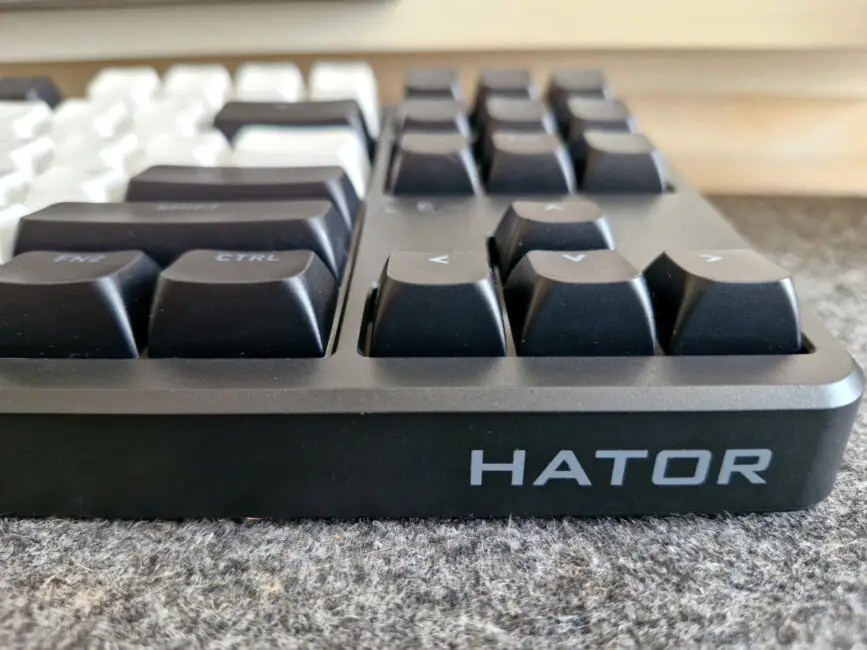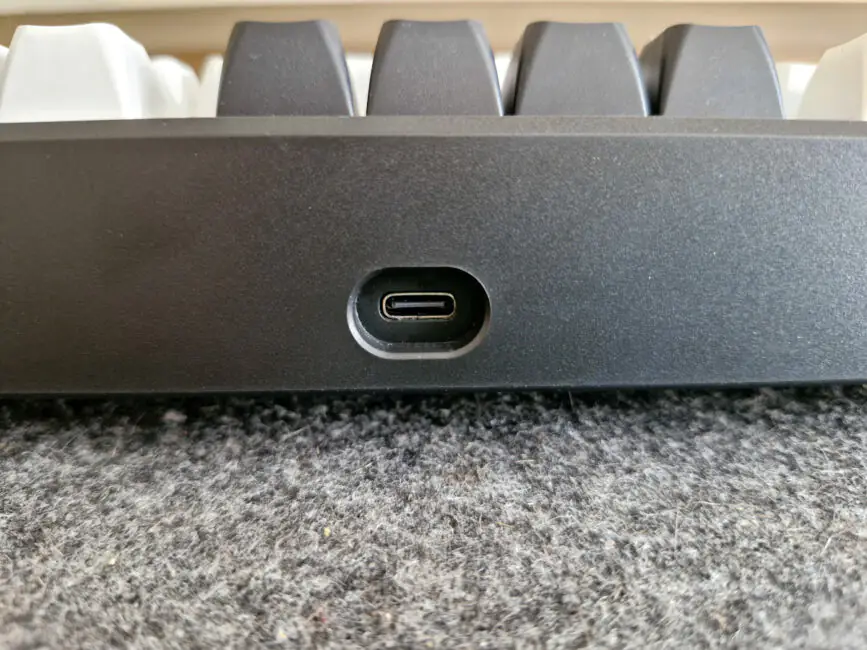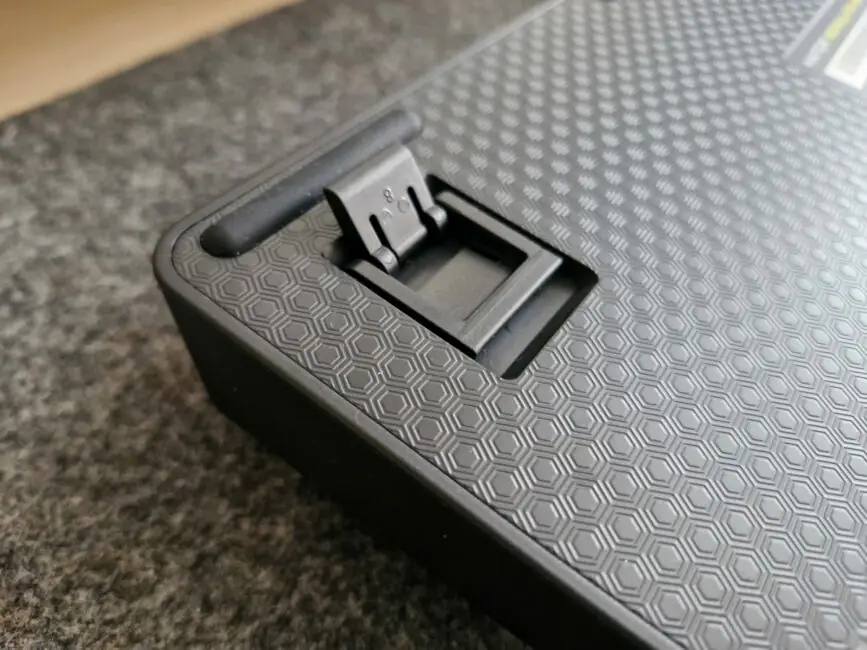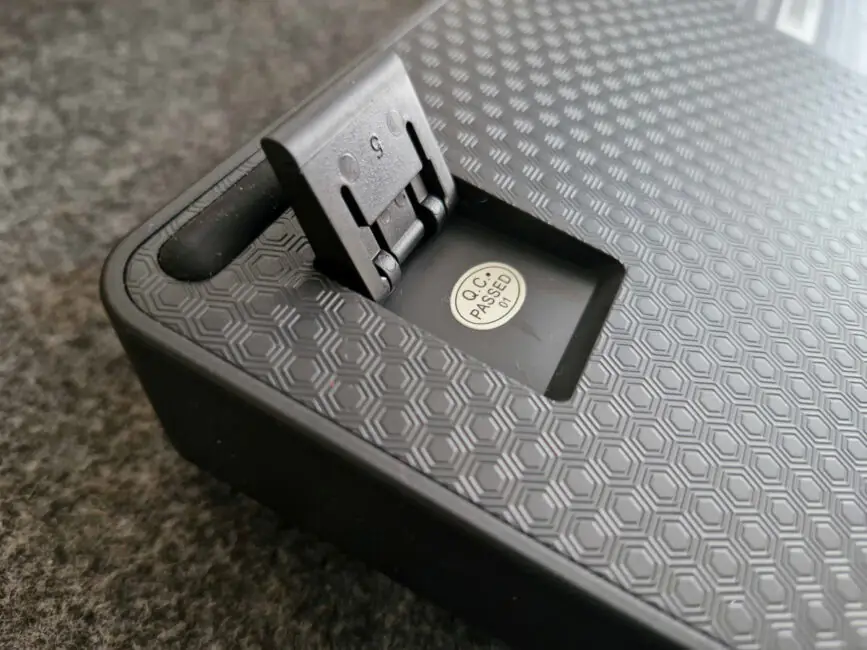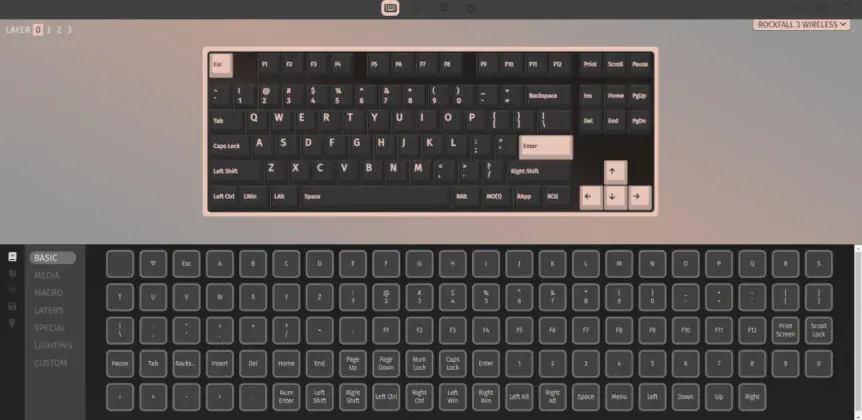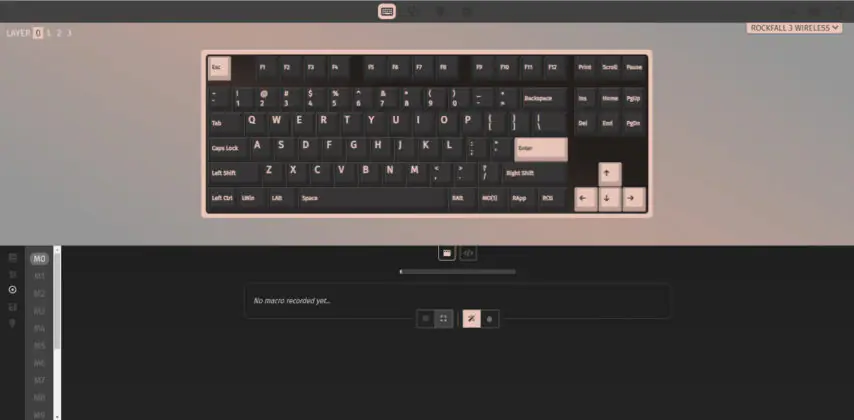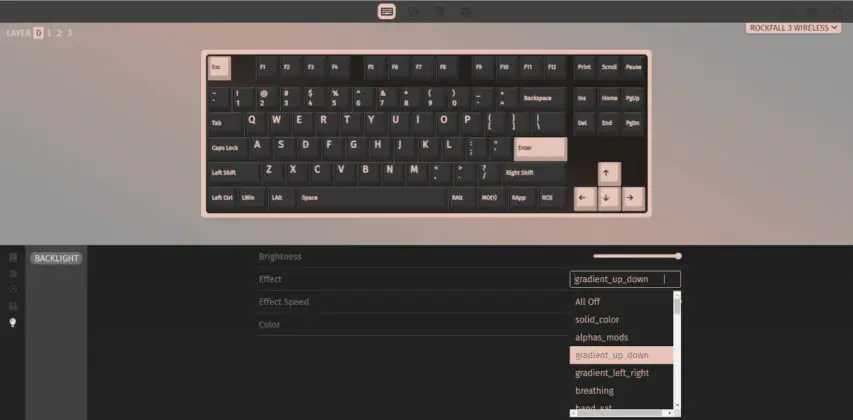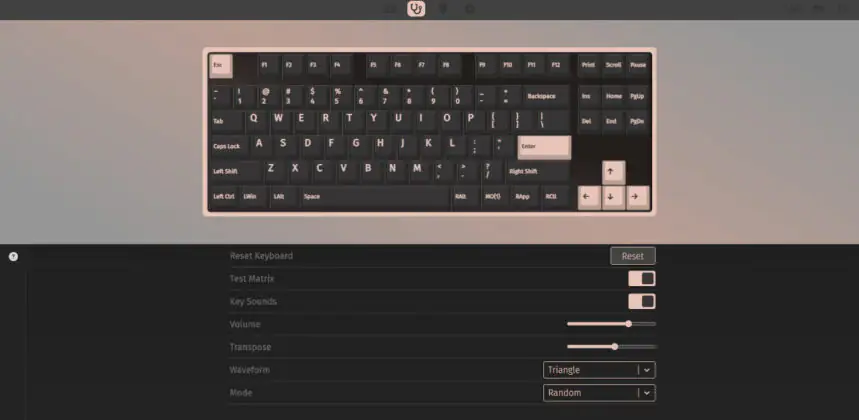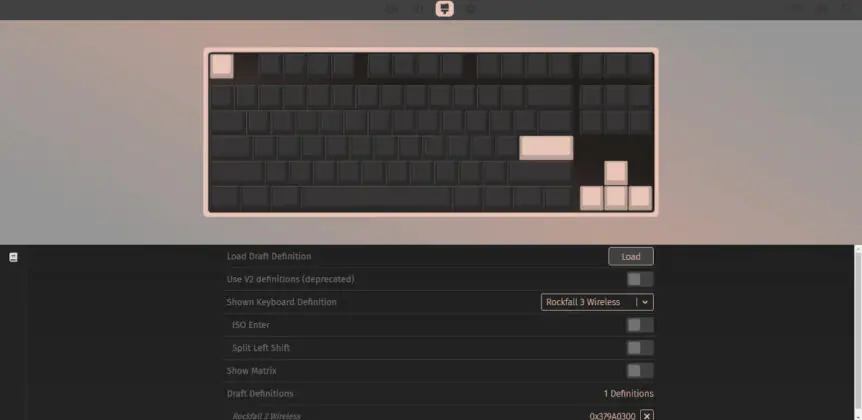© ROOT-NATION.com - Use of content is permitted with a backlink.
What Does the New HATOR Rockfall 3 TKL Wireless Bring to the Table? The latest generation of HATOR’s popular Rockfall series comes with a key upgrade—wireless connectivity. While maintaining the core advantages of its predecessors, the Rockfall 3 TKL Wireless now supports both wired and wireless modes, addressing a major drawback of previous models for many gamers.
Beyond that, the keyboard offers hot-swappable switches, allowing users to not only change keycaps but also swap out switches to fine-tune their typing or gaming experience. Additionally, the firmware is fully customizable, giving users control over everything from key assignments to lighting effects. In many ways, this model feels like a “build-it-yourself” kit for gamers—offering flexibility that enthusiasts will appreciate. Sounds interesting? Let’s take a closer look.
Read also:
- HATOR Rockfall 2 Mecha TKL Authentic Edition Keyboard Review
- Hator Rockfall 2 Mecha TKL Review: Сool Mechanical Keyboard for $55
HATOR Rockfall 3 TKL Wireless Specifications
- Keyboard type: mechanical
- Connection: wired, radio channel, Bluetooth 5.3
- Interfaces: USB
- Size: compact (without Num-block)
- Polling frequency (radio channel): 1000 Hz
- Type of switches: HATOR Aurum Orange (rev.1.0)
- Keycaps: PBT double molded
- Pressing force: 38 gs (±10%)
- Stroke: 1.9 mm (±0.4 mm) to the trigger point, 4 mm (±0.4 mm) full stroke
- Backlight: RGB, it is possible to customize each key
- Battery: 4000 mAh
- Battery life: up to 160 hours
- Charging time: up to 8 hours
- Dimensions: 364×144×44 mm
- Weight: 943 g
- Cable: USB-A/Type-C, braided
- Features: Anti-Ghosting, N-Key Rollover, internal memory, simultaneous connection to three devices via Bluetooth, QMK firmware with customization via VIA
Price and positioning
At the time of this review, the HATOR Rockfall 3 TKL Wireless is one of the brand’s most expensive keyboards, retailing for around $107 (€104). In terms of market positioning, it sits in a middle ground—cheaper than premium offerings from top brands but slightly pricier than lesser-known manufacturers. This seems like a deliberate strategy—targeting the niche of mid-range wireless mechanical keyboards that offer full customization without the premium price tag. Let’s see what makes this model stand out.
What’s in the package
The keyboard arrived in a recognizable yellow box, just like all the brand’s products. Inside you can find the Rockfall 3 TKL Wireless, a USB-A to Type-C braided wire, a USB Type-C to USB-A adapter, an additional spacebar spacer and a keycap removal tool, a 2.4 GHz wireless adapter, accompanying literature, and a set of branded stickers.
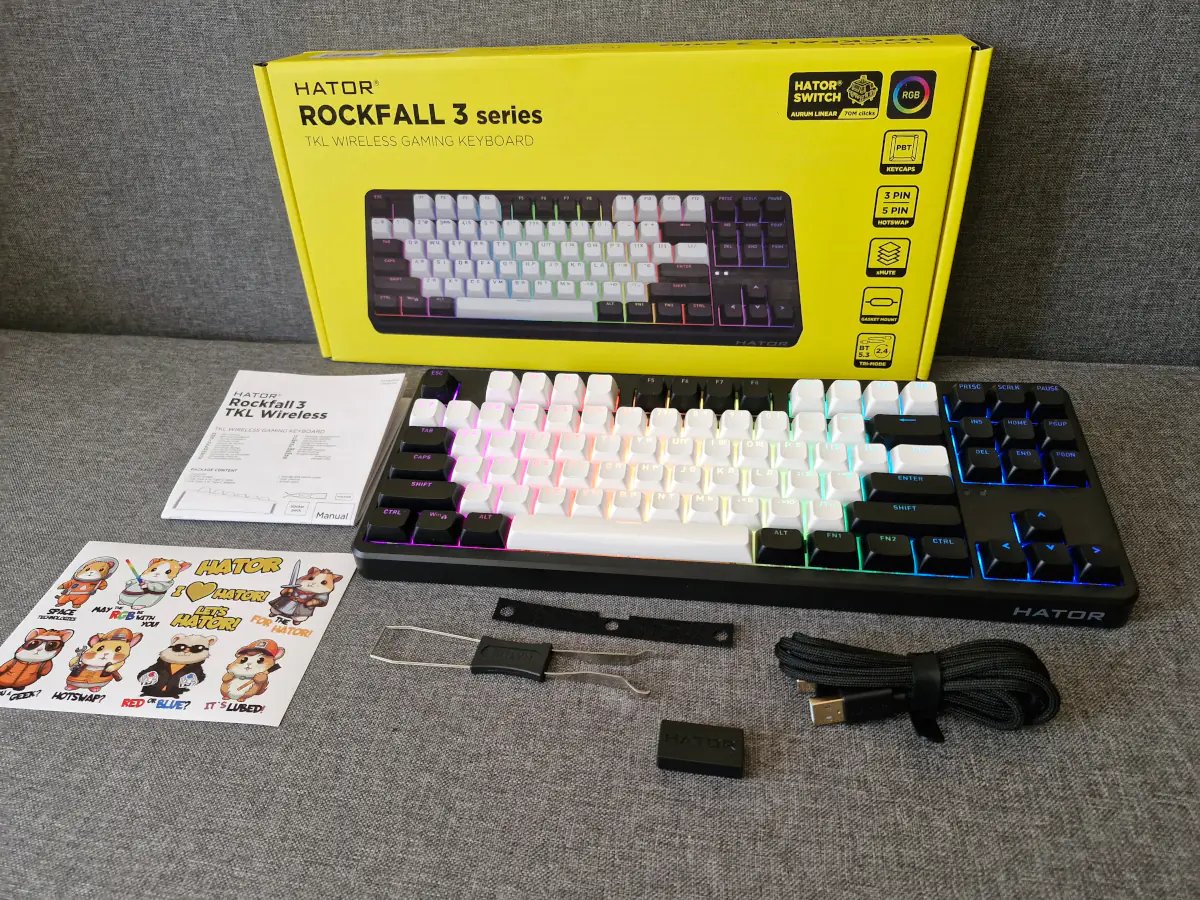
There are no extra keycaps included in the package. The Russian layout has been removed, but unlike the Rockfall 2 Mecha TKL Authentic Edition, there are no custom keycaps in this version. However, users can purchase replacements separately if they want to fine-tune the look of their keyboard. This might be particularly relevant for those who prefer a uniform aesthetic, as the F-row features a mix of black and white keycaps, which may not appeal to perfectionists.
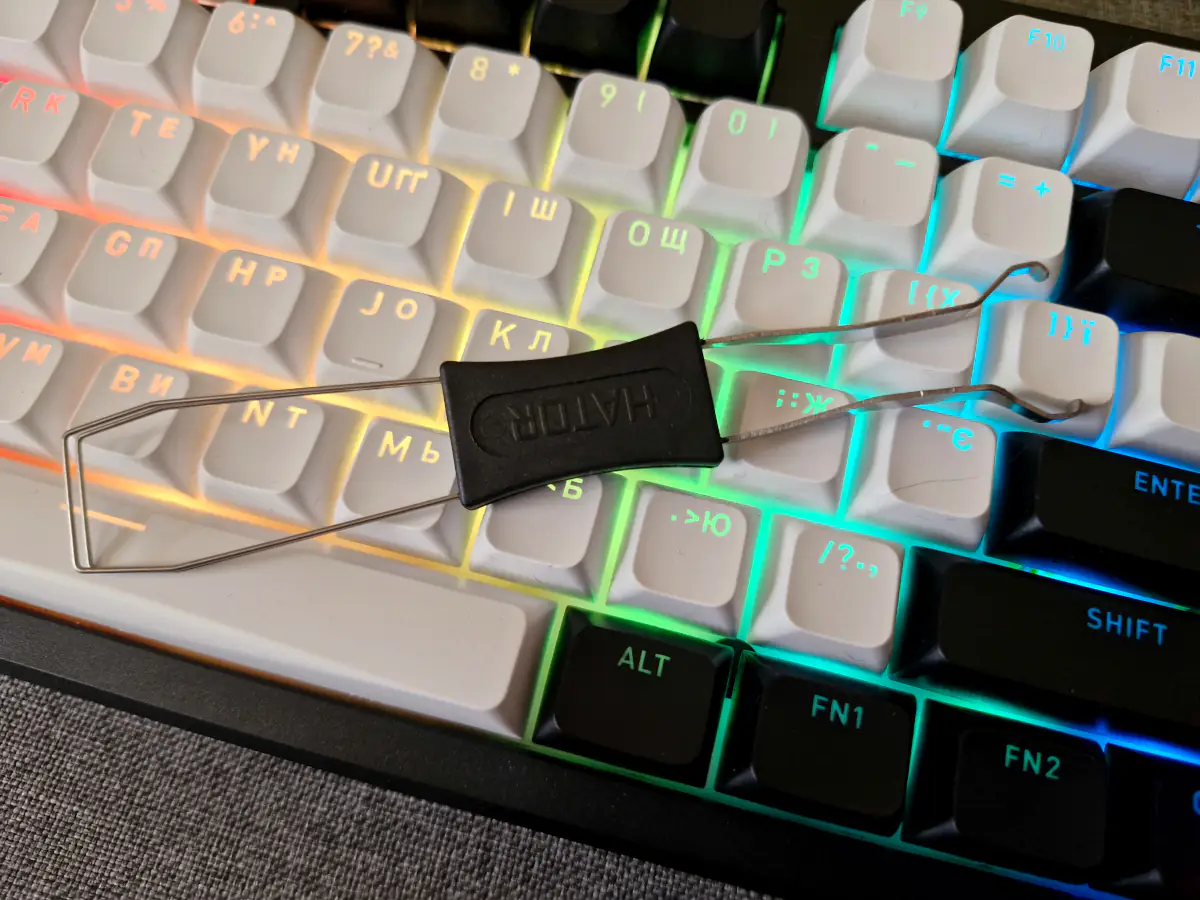
The keycap puller included with the Rockfall 3 TKL Wireless is fairly practical. It features a dual-ended design, with one side specifically for keycaps. This side consists of a thin metal frame, which is actually double-layered. To use it effectively, you’ll need to manually separate the two prongs to slide them under the keycap. There’s a slight learning curve, but overall, it functions well and doesn’t scratch the plastic.
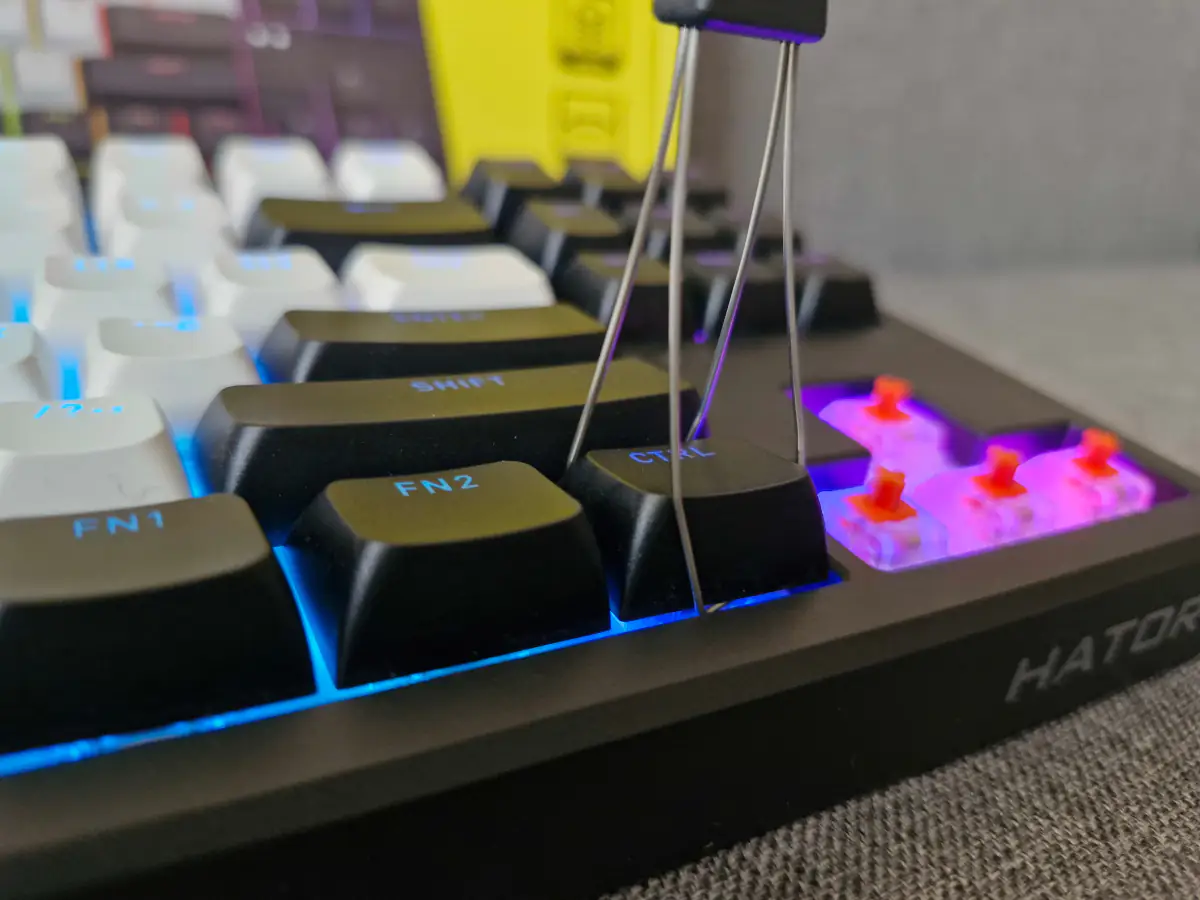
The other side of the puller features bent “legs” designed to slide under the switches. These switches are removable as well, meaning users can replace them partially or entirely, depending on their preference and convenience.
The cable, as usual, is excellent. It’s long and well-constructed with durable braiding. It looks reliable and built to last.
Read also:
- HATOR VAST Pro desk and Arc Fabric chair Review: How to build a comfortable gamer’s place
- Choosing a Keyboard: Format vs. Size vs. Design
Design and materials
The HATOR Rockfall 3 TKL Wireless is presented in an optimal format for most users – compact, without the Num block. Visually, the new model reminds me of previous ones – similar dimensions (364×144×44 mm) and weight (943 g), with the buttons positioned in the same way. The only noticeable difference is that, instead of the standard context menu button (or right mouse button), they’ve placed a second Fn key. However, by default, it functions in the same way.
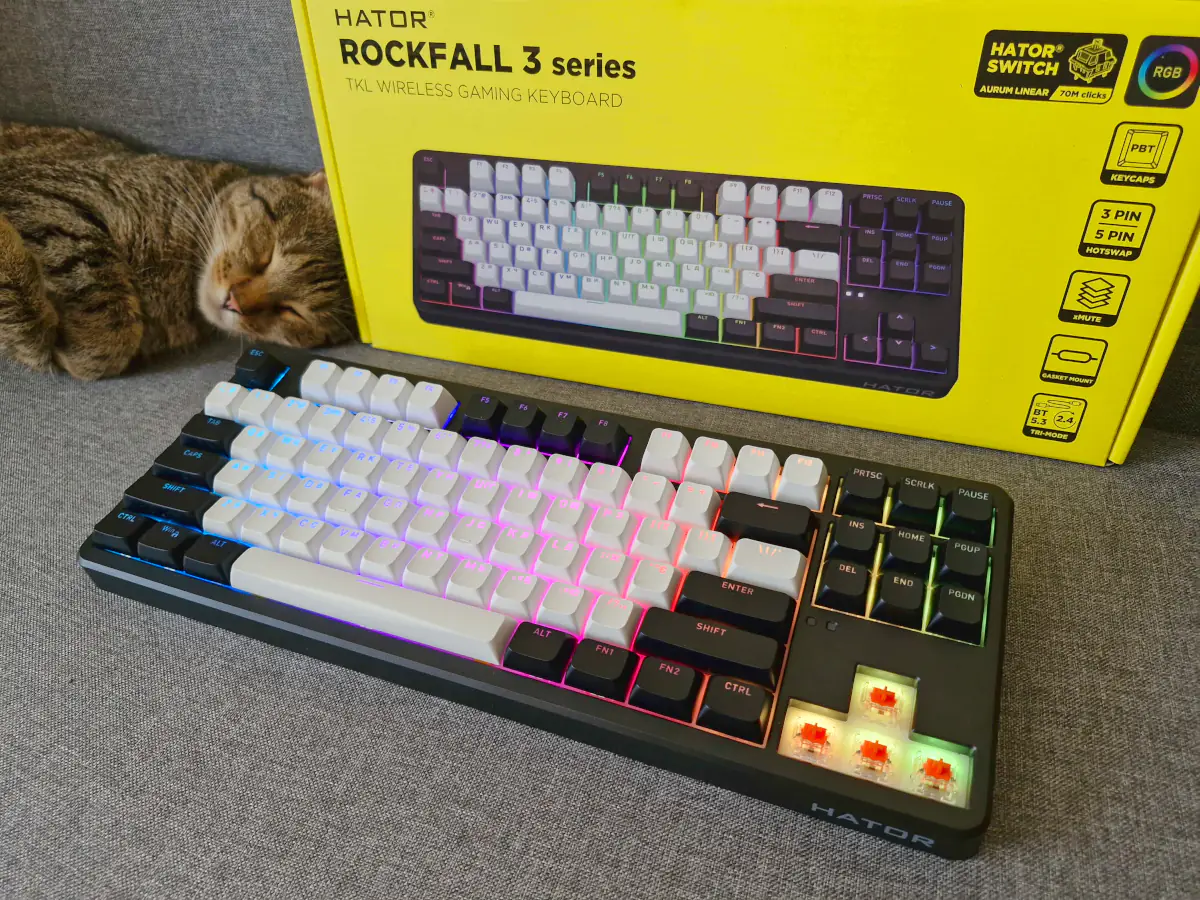
The body is made of dense matte plastic. Considering its substantial weight (almost 1 kg), the keyboard feels sturdy, if not somewhat heavy. The build quality leaves no questions – everything is solid, with no play or other issues. Additionally, the model is available in two colors – black-and-white, as seen in this review, and white-and-grey.
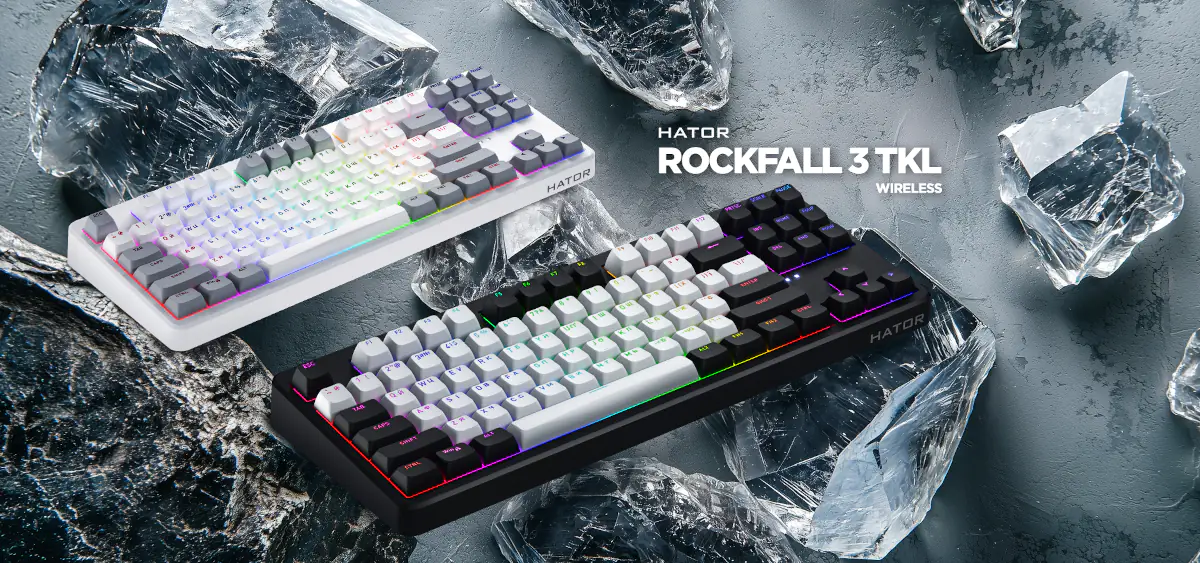
I wouldn’t call the black plastic particularly prone to fingerprints, but dust is more noticeable on the black elements. However, there’s nothing unusual about that.
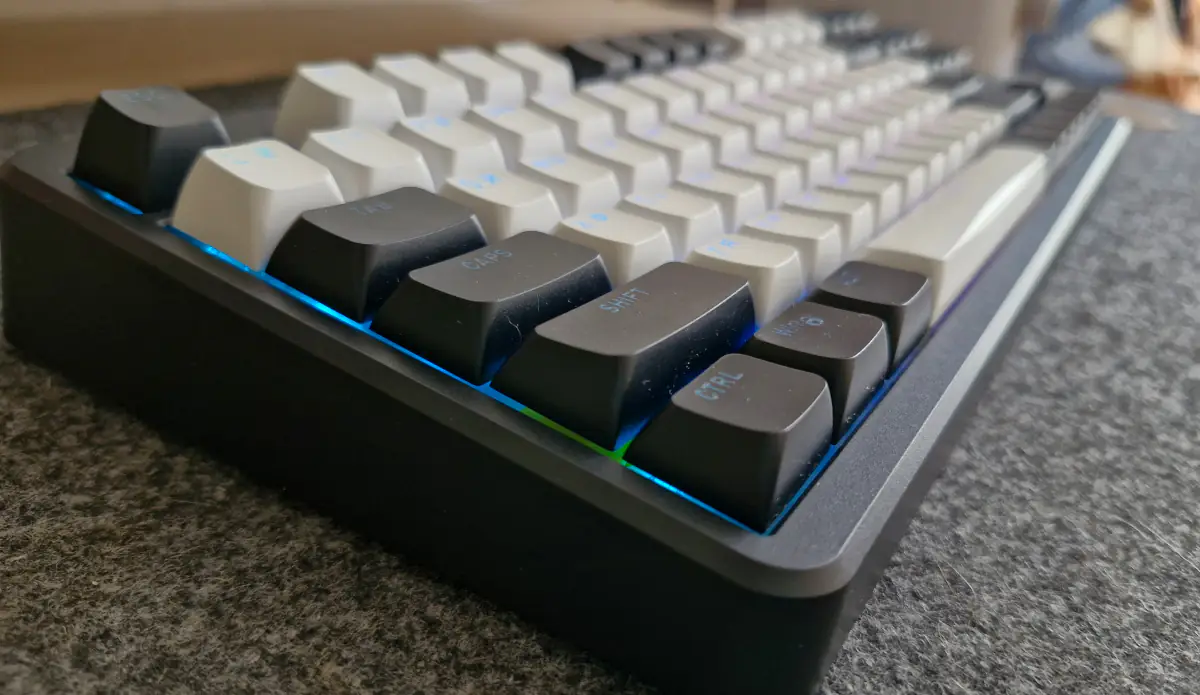
The keyboard has just two indicators, positioned under the Insert and Delete block. The first one indicates Caps Lock, and the second shows the battery charge.
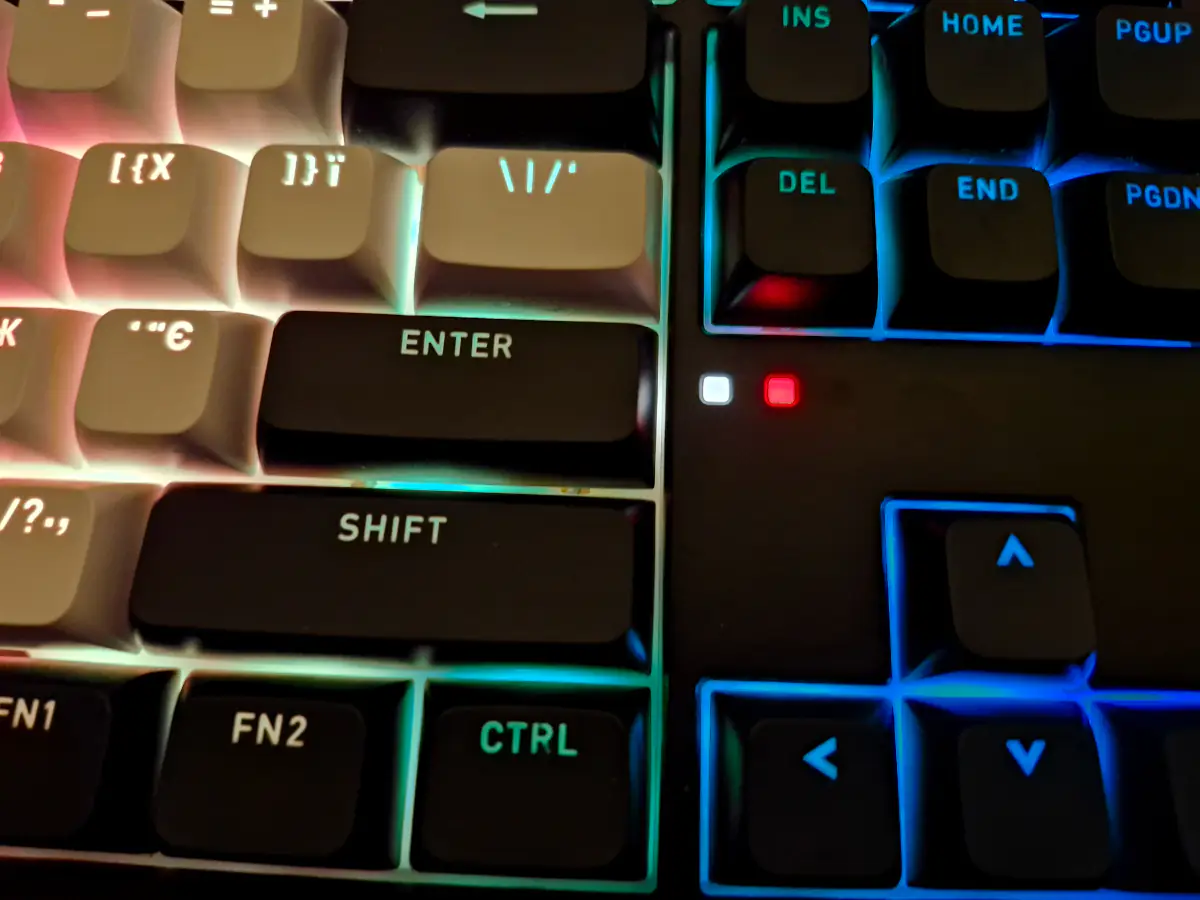
Moving to other sides, the front edge features the brand logo. There’s nothing else on the other sides, and only on the back is there a recessed Type-C port for wired connection and charging.
On the backside, the panel is made of textured plastic. It features the brand and series logo, along with a sticker containing technical markings.
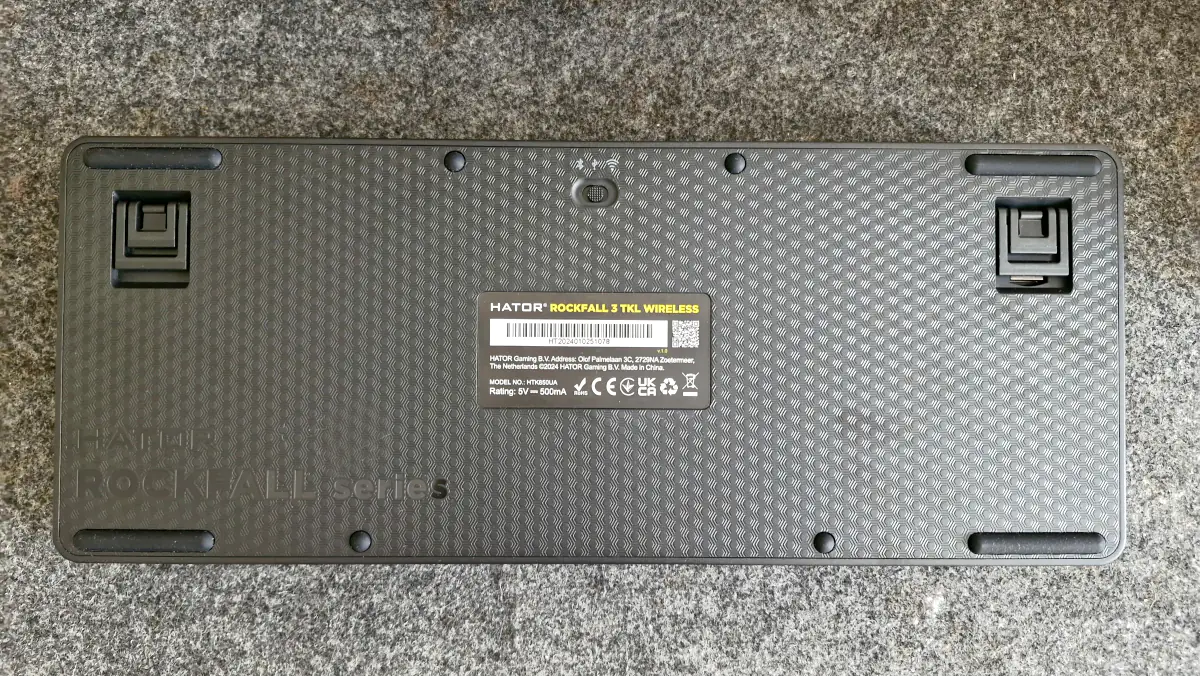
The top corners have dual stands for adjusting the tilt angle—lower and higher. Considering that the keyboard’s body already creates a slight angle, this provides a total of three tilt positions.
By the way, under the right stand, there’s a slot for storing the 2.4 GHz adapter. It’s a convenient solution, with a magnet that keeps the accessory securely in place.
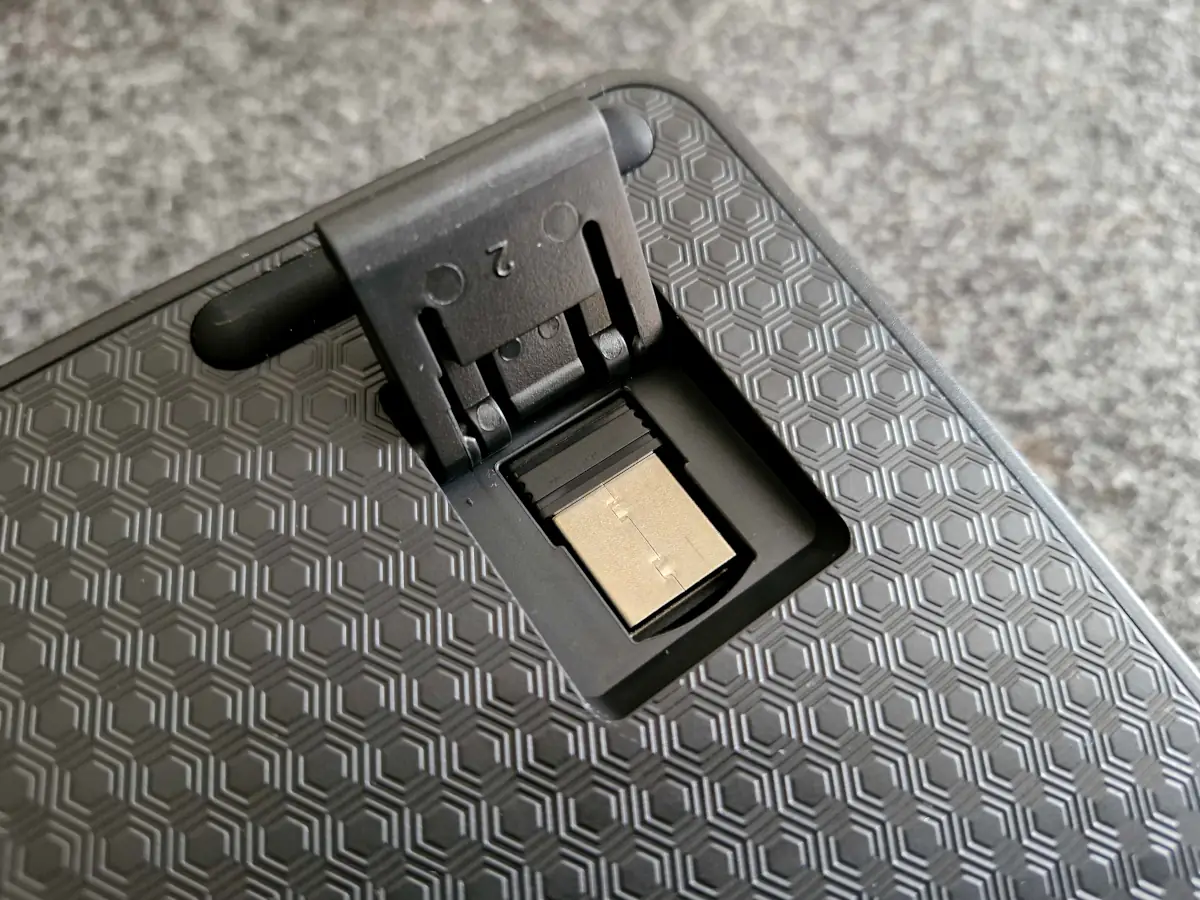
There are also 8 rubberized feet installed – elongated ones at the corners and additional “drops” in the middle along different sides. Thanks to these, the keyboard stays firmly in place, even on glossy surfaces.
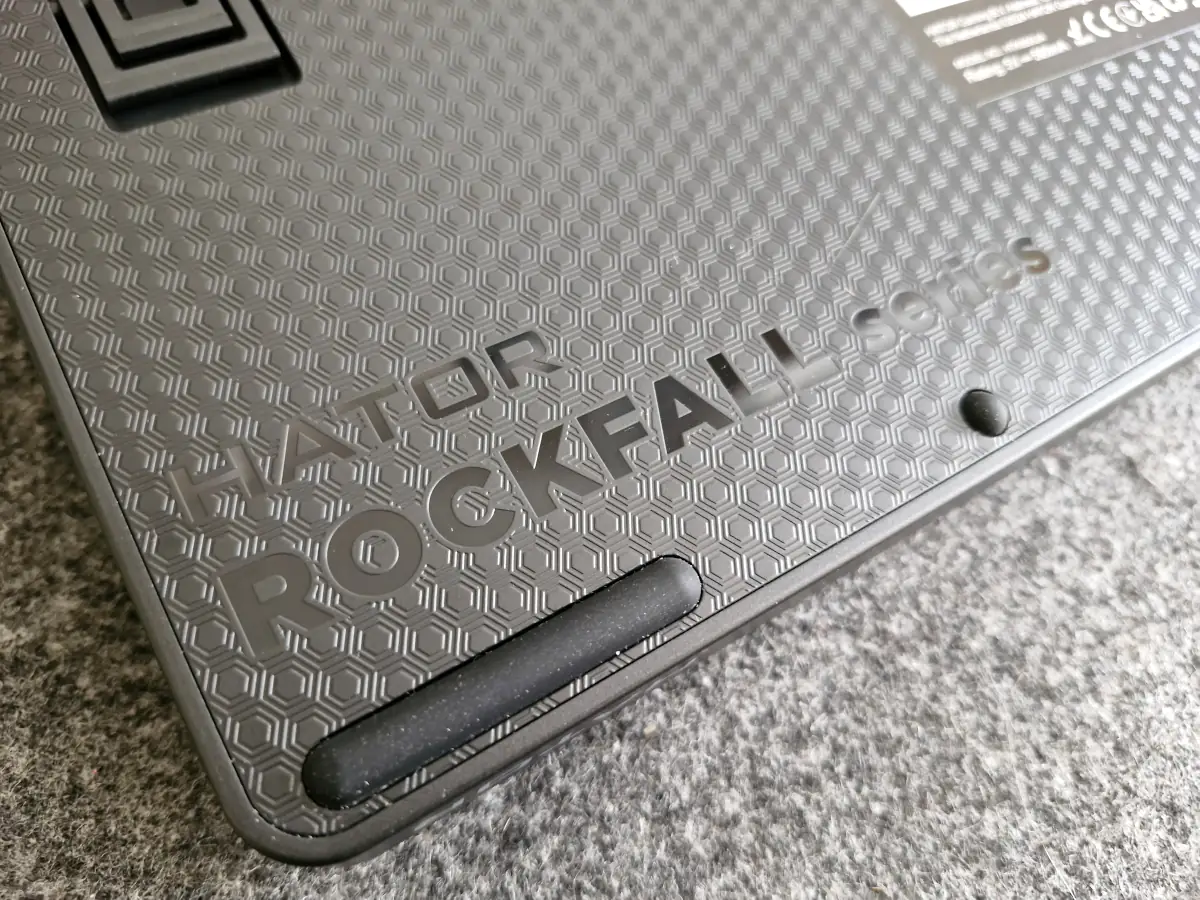
Additionally, there’s a three-position switch for the connection mode – for wired and wireless (Bluetooth and radio channel) connections.
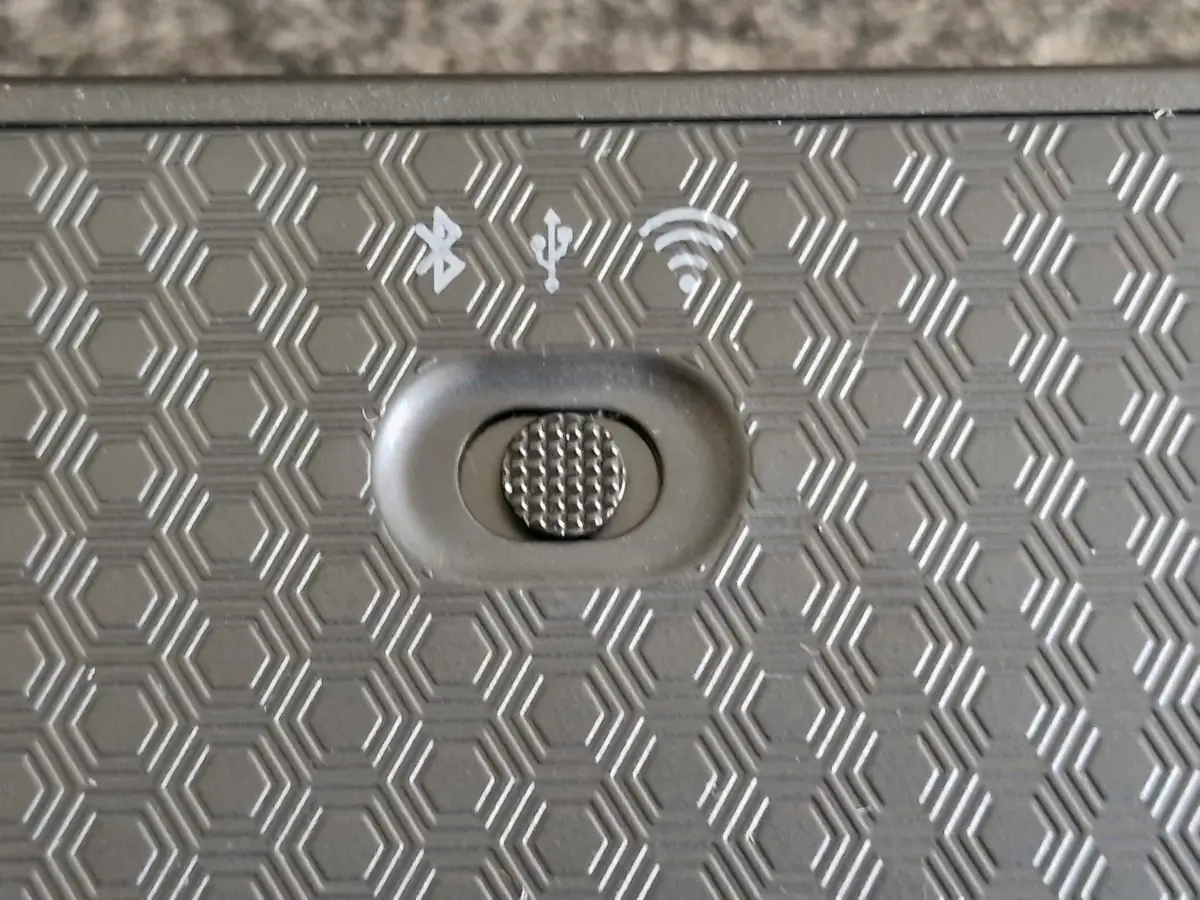
HATOR Aurum Orange keycaps and switches
Let’s start with the “tip of the iceberg” – the keycaps. They are made of matte double-shot PBT plastic, with rounded edges and a slight concave shape in the center for comfortable pressing. The letters are transparent and clear, so there’s no need to worry about wear over time. The layout includes both English and Ukrainian. Additionally, the keys can be replaced if desired.
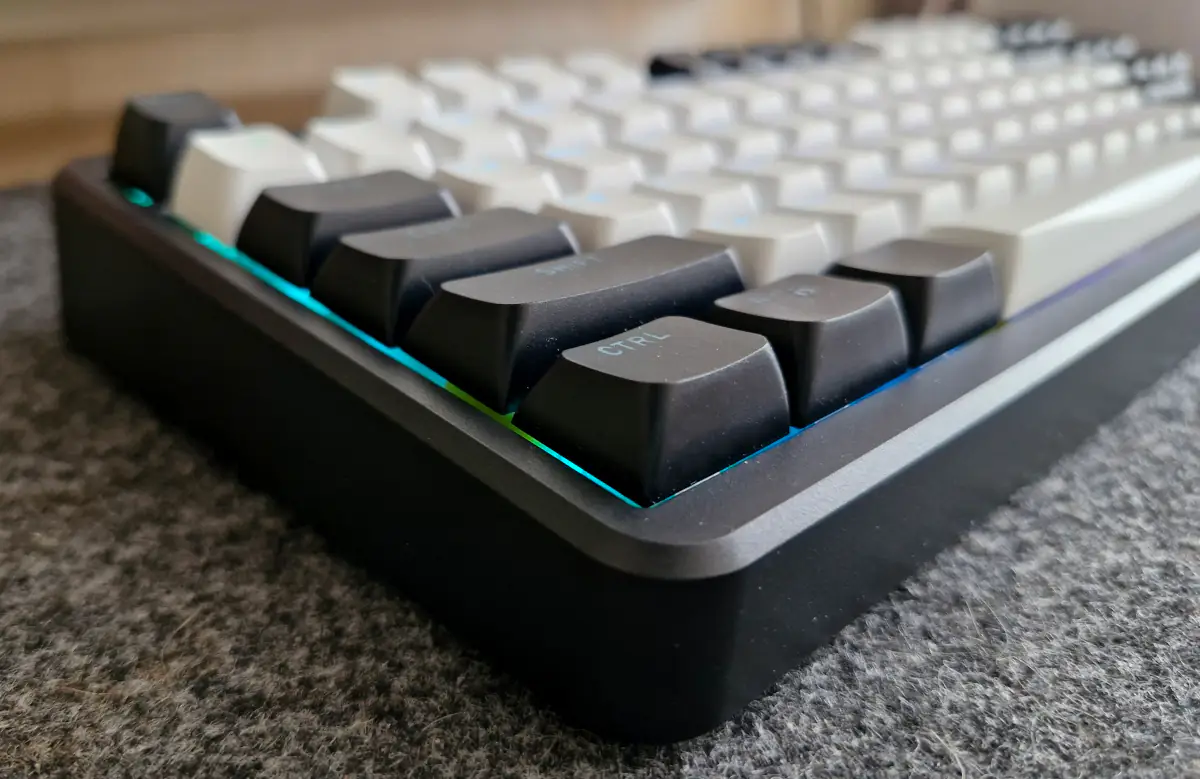
The switches used here are HATOR Aurum Orange, with a lifespan of 70 million presses. They combine ROM and POK plastics (different materials are used for the base and stems, respectively), with a transparent polycarbonate top and gold-plated contacts. These switches also feature extended springs and lubrication during production, providing a smoother and quieter operation. The actuation force is 39g (±10%), the distance to activation is 1.9mm (±0.4mm), and the total travel distance is 4mm (±0.4mm).
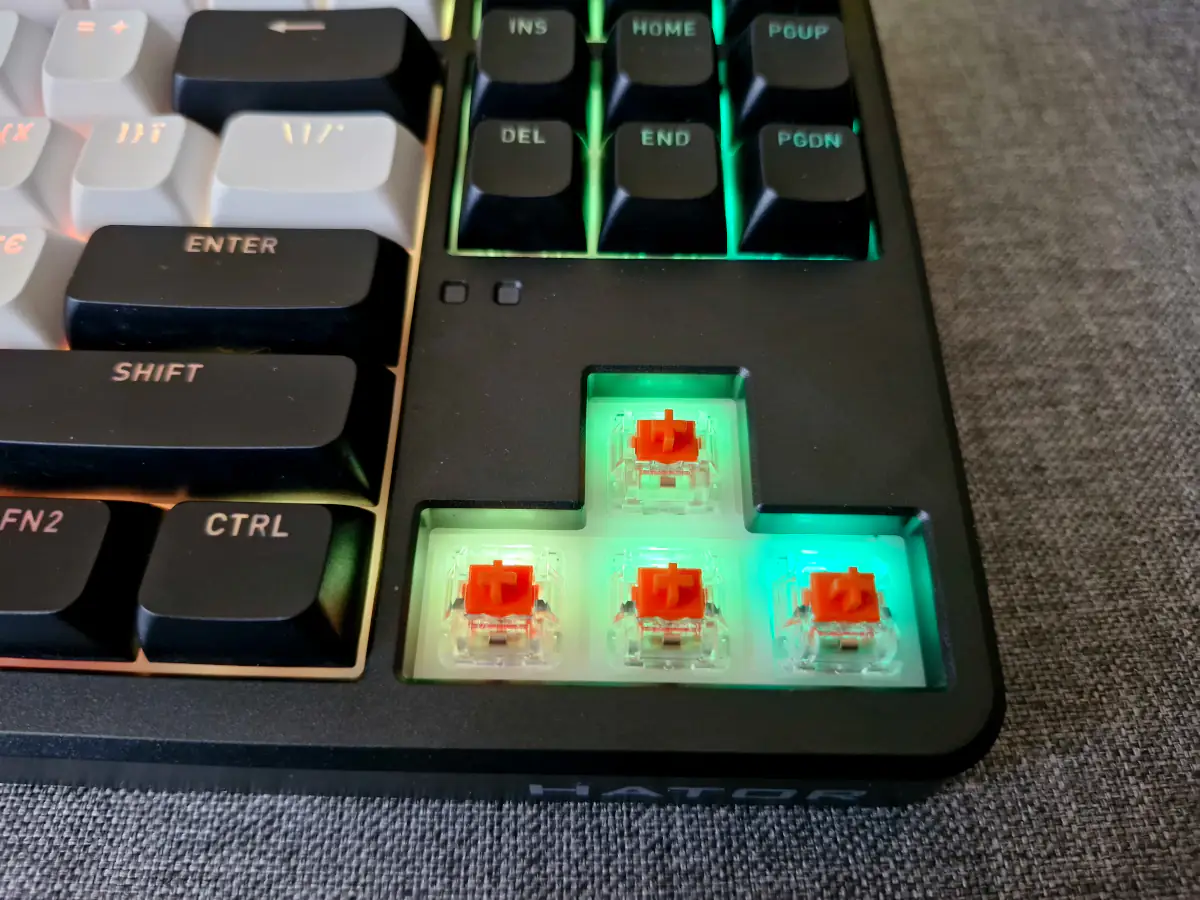
What’s particularly interesting about the HATOR Rockfall 3 TKL Wireless is that you can not only replace the keycaps but also the switches themselves. This turns it into more than just a keyboard; it’s like a customizable build, allowing users to adjust it exactly to their preferences. It’s an ideal solution for those who enjoy having control over every detail, whether in gaming or beyond.
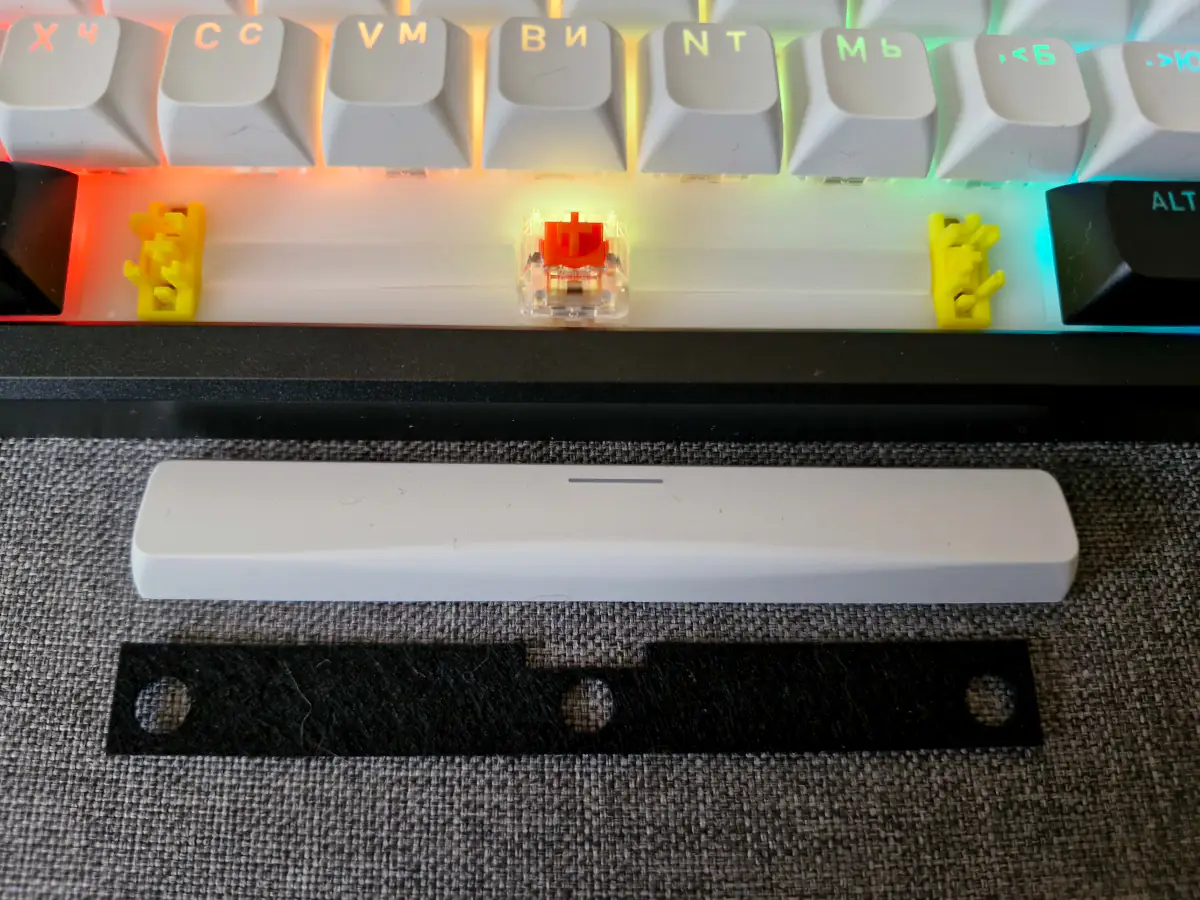
Another notable feature of the Rockfall 3 TKL Wireless is its multi-layer noise and vibration reduction system, combined with the flexible Gasket Mount mounting. This setup is designed to make the keyboard both quieter and smoother, providing a more pleasant tactile experience whether typing or gaming.
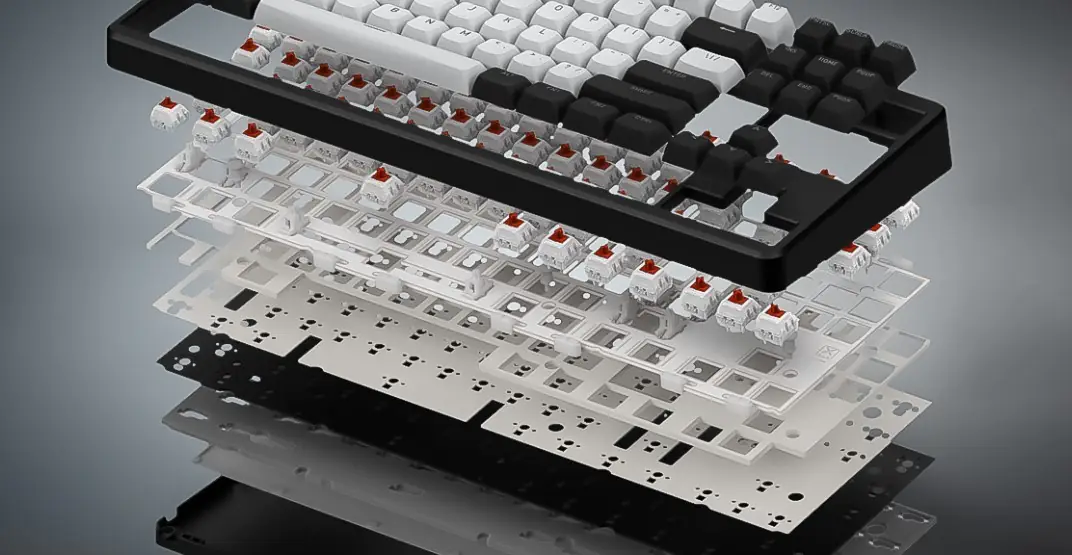
What is the experience like when interacting with the new HATOR model? I’ve typed almost half of this review on it, and here’s what I can say. Making a mechanical keyboard completely silent is almost impossible, but it’s clear the manufacturer has done everything possible to make the sound softer and quieter. The standard single keys are slightly louder, while the elongated ones (likely due to multiple mounting points) are quieter and more springy. The keypress feedback is pleasant and smooth – a light touch is enough to trigger an action. I believe the Rockfall 3 TKL Wireless is a well-balanced all-rounder that will be appreciated in gaming, typing, and daily use.
Read also:
RGB backlighting
Lighting in gaming keyboards has become somewhat of a standard, and of course, the Rockfall 3 TKL Wireless features it as well. As expected, it offers over 16 million color shades, along with options to adjust both brightness and lighting effects.
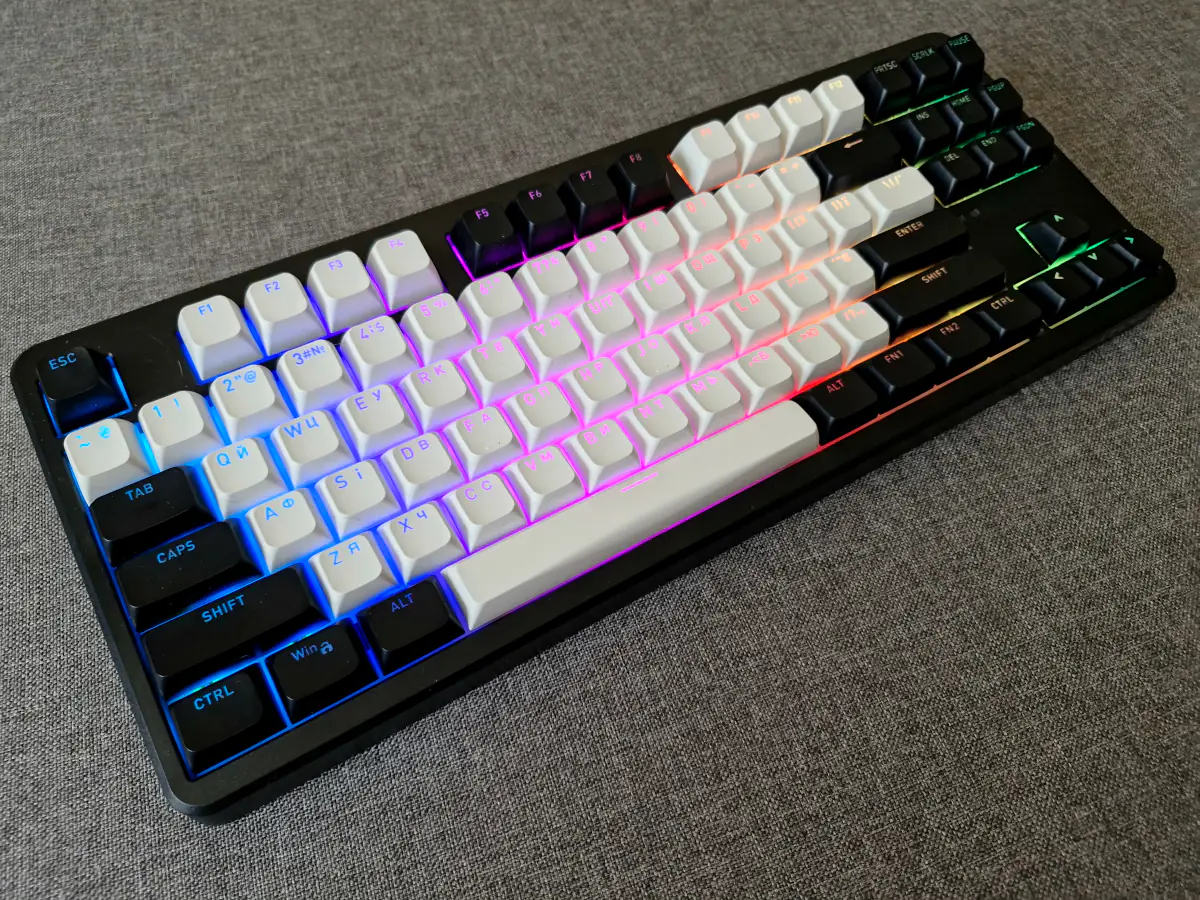
To change the lighting style, simply press the Fn1 and Backspace combination. While I couldn’t find the exact number of lighting effects, it’s clear there are dozens to choose from. Solid, blinking, wave-like, spiral, pulsating – there are plenty of options to suit any mood.
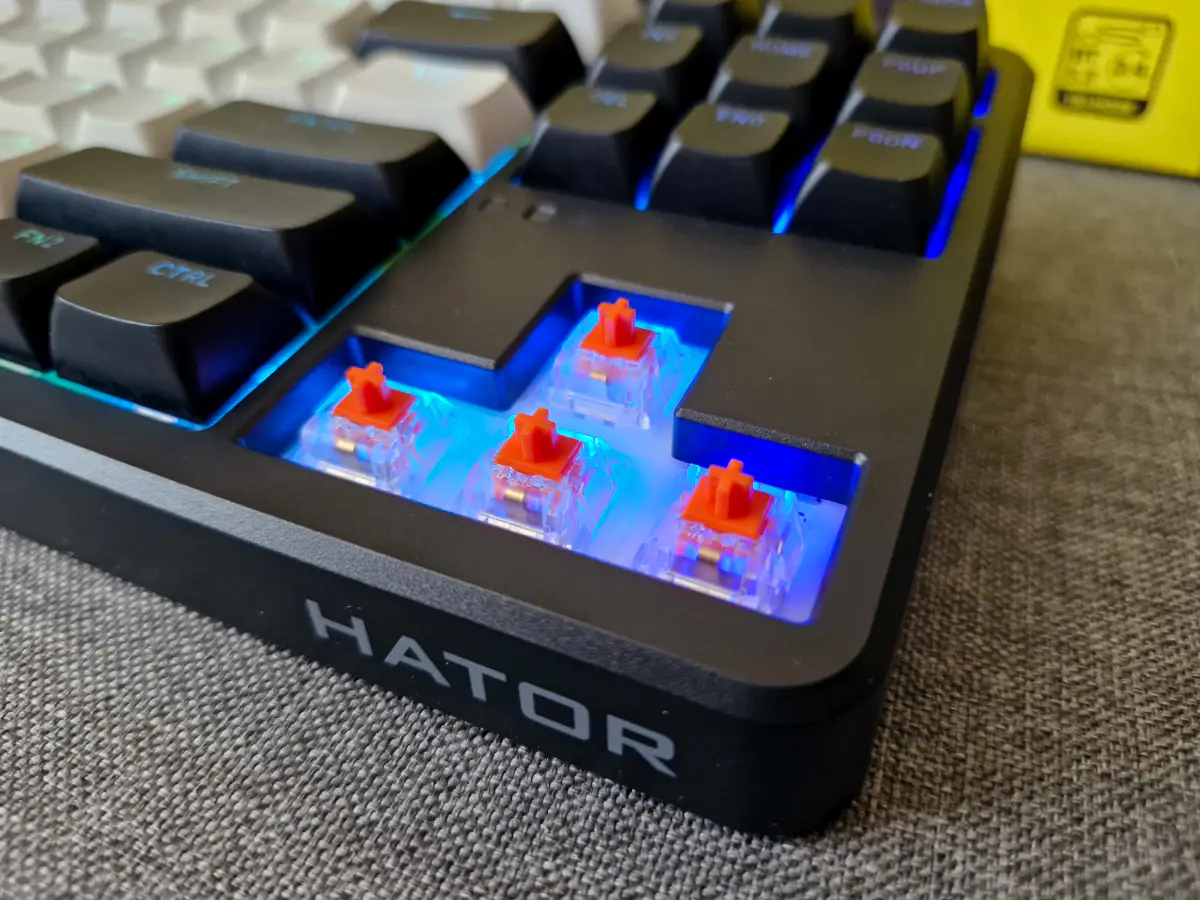
To adjust the speed of the color changes, press Fn1 along with the left or right arrow key, respectively. Brightness is controlled similarly, using the up or down arrow keys. There are a total of five brightness levels. In my opinion, the lighting control via the keys is simple, logical, and fairly convenient.
Connection, software and configuration via VIA interface
So, the HATOR Rockfall 3 TKL Wireless supports all possible connection options—wired, Bluetooth, or via the 2.4 GHz radio channel. With the latter, I don’t think anyone will have issues; simply plug in the adapter, and the connection happens automatically. As for Bluetooth, there is a small nuance during the initial connection. The keyboard can pair with up to three devices, so when linking them for the first time, you need to hold down Fn1 and 1, 2, or 3 for three seconds—each number corresponds to a different device. Once the selected button starts blinking, you can pair the device. This is mentioned in the manual, but who reads that when it seems so straightforward? So, save yourself the hassle of trying to connect the keyboard directly like I did.
The wired connection is necessary not only for operation but also for charging and configuring the Rockfall 3 TKL Wireless. I’d like to focus a bit more on the setup process. This model features QMK firmware, which provides access to flexible advanced settings. Unlike proprietary software, this is open-source and allows for custom firmware creation specifically for the keyboard. By the way, QMK stands for Quantum Mechanical Keyboard. To access the settings, you’ll need the VIA interface—either the web version or the app. A detailed guide on what it is and how to use it is available here. The manufacturer has made sure users can figure it out easily. As for my personal recommendation, I’d suggest using the web version, as the app didn’t always work as expected for me. But perhaps that was just an issue on my end.
After working with VIA, you gain access to a multitude of possibilities. You can program any key, add media functions, create macros, and customize the lighting as you wish. On one hand, the use of open QMK provides great potential for keyboard customization. On the other hand, it requires more time for setup and familiarization. For me, it would have been more convenient if the Rockfall 3 TKL Wireless could be configured using HATOR’s proprietary software, which I find simpler and more intuitive, like it was with previous models. But for those who enjoy tweaking settings and exploring customization options, this is definitely a paradise.
Battery life
If the keyboard is wireless, it logically needs to be equipped with a battery. The Rockfall 3 TKL Wireless has a 4000 mAh battery, which is said to last up to 160 hours of use on a single charge. This means just under a week of continuous operation. Of course, achieving this level of autonomy with maximum brightness on the backlighting might be difficult, but even with the backlighting on and using the keyboard for 6-7 hours a day, it seems unlikely that you’d need to charge it more than once a week.
By the way, it takes up to 8 hours to fully charge the keyboard to 100%. You can leave it charging overnight and get another 7+ days of autonomy, or you can keep using it without any restrictions while it’s charging via the wired connection. It gives you a lot of flexibility depending on your usage habits!
Summary and competitors
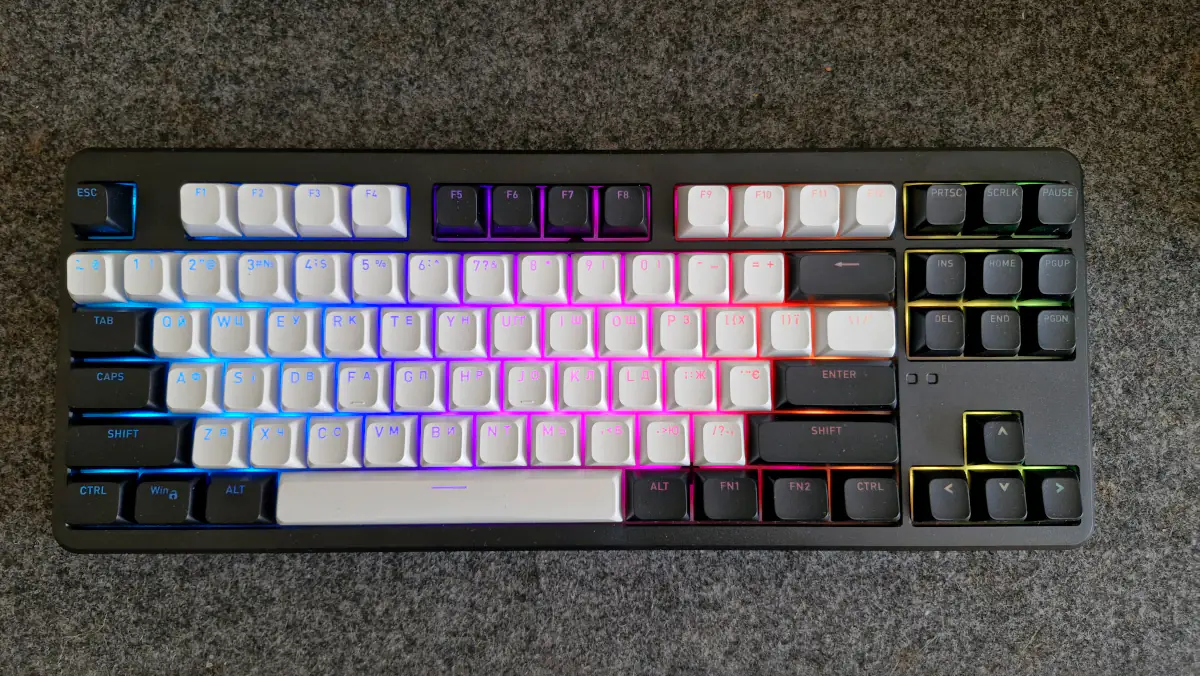
In fact, the HATOR Rockfall 3 TKL Wireless is a new evolution of the popular Rockfall series, changing the game. In addition to being the same reliable and enjoyable mechanical keyboard, the new model now offers wireless connectivity through Bluetooth and a radio channel, alongside the wired connection. The brand has also significantly expanded the model’s customization options – you can swap out keycaps, switches, and program everything to fit your preferences, making it a personalized experience. This level of functionality might not be necessary for beginner gamers or those who prefer the “plug-and-play” approach. However, for those who love to have full control over every aspect and influence every process, this “toy” will definitely come in handy.
A similar option among competitors at a comparable price point would be the Epomaker TH80 Pro V2. It offers Hot Swap, QMK support, multiple connection options, and RGB backlighting—all the essentials are covered. Additionally, it’s slightly more compact and features a small display in the top-right corner.
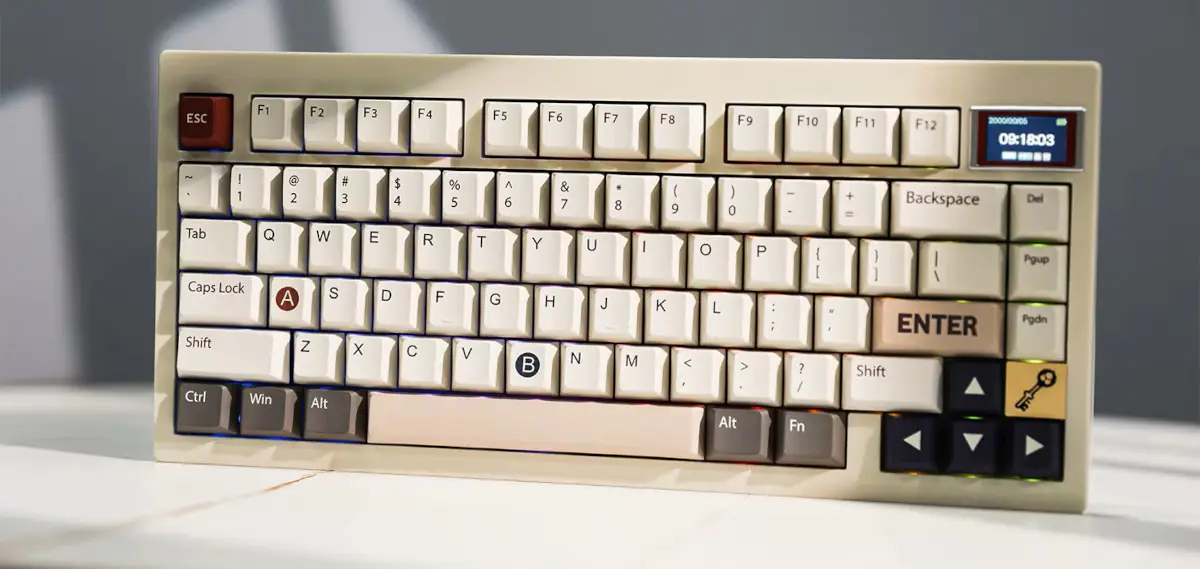
Another option to consider is the Keychron K3 Max RGB Backlit (HS). It has a different design, with a more business-like aesthetic, and is thinner and lighter—almost half the thickness of the Rockfall 3 TKL Wireless. However, it still offers many of the same key features as the Rockfall 3, such as Hot Swap and RGB backlighting. That said, the significantly thinner profile likely won’t be able to match the multi-layer sound and vibration insulation offered by the Rockfall 3 TKL Wireless.
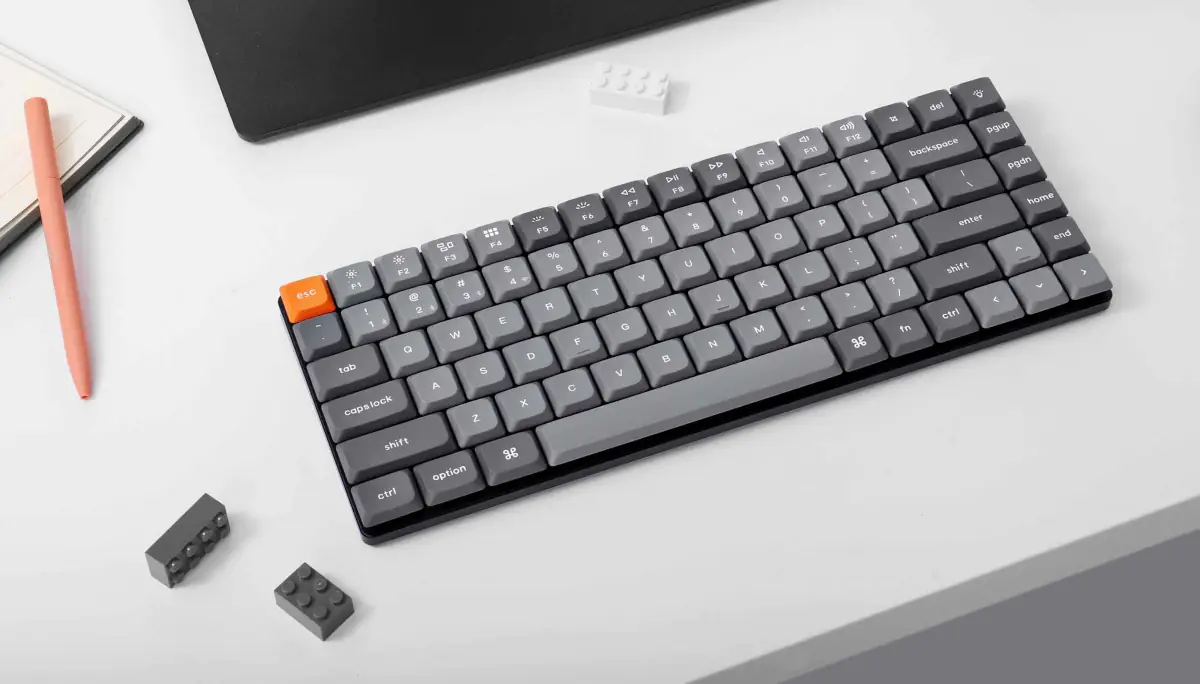
Read also:
- Hator Stellar Pro Wireless Gaming Mouse Review
- Hator Hyperpunk 2 USB 7.1 review: gaming headset + sound card for $60
- Hator Hypergang Wireless Tri-mode gaming headset review



